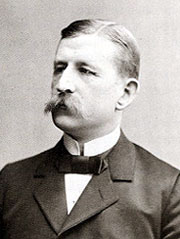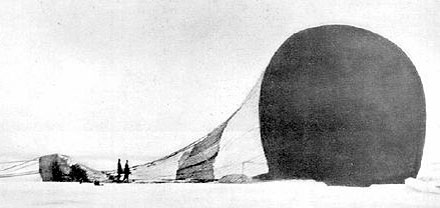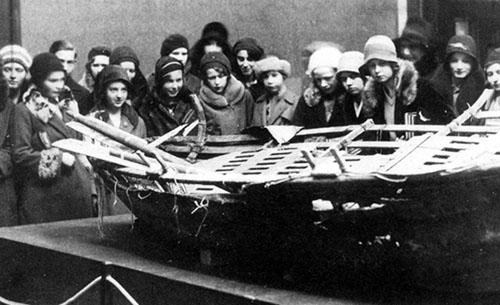Flying to the Arctic
Today, we fly to the North Pole. The University of Houston's College of Engineering presents this series about the machines that make our civilization run, and the people whose ingenuity created them.
So, who first reached the North Pole? Getting there lay on people's minds for centuries. Thomas Jefferson suggested going in a balloon. For more than a century after Jefferson, a parade of daring explorers tried to reach the North Pole by ship and land; and they all failed. Robert Peary and four Inuits claimed to've made it in 1909, but their claim has been sharply questioned. When Byrd and Bennett flew a Fokker Trimotor over the Pole in 1926, their navigation was also contested.
You might say Jefferson was vindicated when Amundsen and Ellsworth finally, and convincingly, flew over the North Pole, not in an airplane, but in the semi-rigid, Italian-built dirigible Norge. The Norge flew from Svalbard, an archipelago in the Arctic Ocean. It crossed the Pole and landed in Alaska.
 But that was a dirigible. It could be steered. Much earlier, in 1897, Swedish physicist and aeronaut S. A. Andrée tried to reach the Pole in a balloon. Dirigibles were then still in their infancy, but unsteerable balloons were a mature technology.
But that was a dirigible. It could be steered. Much earlier, in 1897, Swedish physicist and aeronaut S. A. Andrée tried to reach the Pole in a balloon. Dirigibles were then still in their infancy, but unsteerable balloons were a mature technology.
Andrée was wonderfully confident, convincing, and wholly unrealistic. His idea of how to steer a balloon as it rode with the wind boggles the mind. He meant to fit his balloon with sails which, he understood, would hang slack as he rode with the wind.
But, he would fly low and drop a long rope. He rope would drag on the ice below and slow the balloon. Then he could tack against the westerlies, and move northward. Andrée never did manage to make the drag ropes work. During one test flight, he was blown all the way across Sweden and the Baltic Sea to Finland. But his blind confidence survived. He raised about a million in our dollars today from the King of Sweden, Alfred Nobel, and others. Then he set out with two companions from a base on Spitsbergen Island.
 While they were still in sight of land, the drag ropes almost pulled the balloon into the sea, then tore loose from the gondola. They were without directional control from the start, and that was the last anyone saw of them -- until 1930. Then an expedition to a small island east of Spitsbergen found their remains along with Andrée's journal and even undeveloped photos.
While they were still in sight of land, the drag ropes almost pulled the balloon into the sea, then tore loose from the gondola. They were without directional control from the start, and that was the last anyone saw of them -- until 1930. Then an expedition to a small island east of Spitsbergen found their remains along with Andrée's journal and even undeveloped photos.
They'd been blown north, lost hydrogen, and bounced to a safe landing on the ice two days later, their gear intact. They spent the next three months working their way south. They finally died, possibly of trichinosis from uncooked polar bear meat.
Through it all, Andrée's kept his optimism. He'd sent a carrier pigeon message from the out-of-control balloon saying things were going well. His subsequent journal, filled with heroic good cheer, became a Swedish saga, reworked in books and a song-cycle. It even became an Oscar-nominated movie starring Max von Sydow as Andrée. For this tale simply had to be changed from the misguided technology it was, into heroic tragedy -- which it was, as well.
I'm John Lienhard, at the University of Houston, where we're interested in the way inventive minds work.
See the excellent Wikipedia account of Andrée's flight. All images from this source. Above, S. A. Andrée and his balloon, the Eagle, taking off with ropes trailing.
For a nice review of early aerial exploration of the North Pole, see: D. D. Jackson, The Explorers. (Alexandria, VA: Time-Life Books, 1983): Chapter 1, The Race to the Top of The World.
For an odd take on our fascination with flying to the North Pole, see Episode 278.

Photo taken by the crew of Andrée's Eagle, just after their last descent onto the ice

A legend is made: Schoolchildren looking at the crew's boat, recovered and exhibited.